The Most Dangerous Game (1932)
Directed by: Ernest B. Schoedsack, Irving Pichel
Written by: James Ashmore Creelman, Richard Connell
Starring: Fay Wray, Joel McCrea, Leslie Banks, Robert Armstrong
USA
AVAILABLE ON BLU-RAY: NOW, from EUREKA ENTERTAINMENT
RUNNING TIME: 63 mins
REVIEWED BY: Dr Lenera
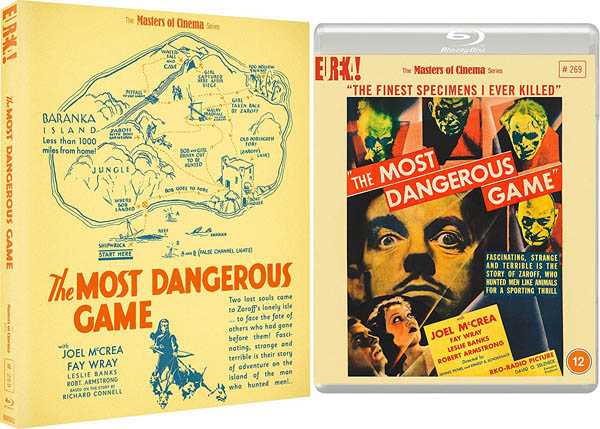
Renowned big game hunter and author Robert “Bob” Rainsford is traveling on a luxury yacht when the owner disregards the captain’s concerns about the channel lights not matching the charts. The ship therefore runs aground, takes on water and explodes. The sole survivor, Bob swims to a nearby island and becomes a guest of the Russian Count Zaroff who’s obsessed with hunting but tired of it until he found a new animal to hunt. The other guests from another shipwreck are Eve Trowbridge, her alcoholic brother Martin, and two sailors. Eve lets Bob know that the sailors were taken to see Zaroff’s trophy room and were never seen again. Then Martin is shown the trophy room once the others two have gone to bed….

Hard Target, Tremors: Shrieker Island, Turkey Shoot, Run For The Son, The Woman Hunt – what these films and quite a few others, not to mention episodes of many TV shows, share is the premise of man hunted by man for sport, and it’s no surprise that it’s such an oft-used one, seeing as it’s not just guaranteed [well almost, I gather that the 2022 direct remake of this 1932 original is a total dud but I’ll check it out anyway] excitement but can be given plentiful sociological and political weight. The original The Most Dangerous Game isn’t really political [2020’s The Hunt tried to go majorly on the political stuff], but much of the dialogue is about the roles of the hunter and the hunted, be it animal or human, while our straight jawed hero Bob is ironically a person who loves hunting and even has some perhaps arrogant and misguided views about his prey, then has this all thrown in his face when he becomes the prey. Most of all though, this classic actioner with strong horror elements is a wonderfully economical, straight to the point and exciting piece of filmmaking; perfectly paced and more than suspenseful and unsettling enough to keep us tense until its amazing second half which is a true high point of action cinema in its time, raising the intensity higher and higher so that, actually, when it’s finished we’re quite satisfied despite the very short running time. Before my viewing of Eureka’s Blu-ray, I’d last watched it on TV around three decades ago with my younger brothers aged around ten and twelve years of age, and they both thoroughly enjoyed it. Of course certain cinematic techniques of the time, especially the slight speeding up of some of the action, will seem odd to first time viewers who aren’t used to films of this vintage, but it really is a ripping yarn of the best kind that can probably be enjoyed by almost anybody. And it should appeal especially to lovers of the 1933 King Kong. Why, you ask?
Richard Connell’s 1924 short story, inspired by the big-game safaris in Africa and South America that were something of a fashion for rich Americans at the time, was also published under the title The Hounds Of Zaroff which became the alternate title for this film. Edgar Wallace was due to write it after doing a second draft for his King Kong script, but he then died of diabetes and pneumonia. Eventual scripter James Ashmore Creelman followed the story pretty closely, the biggest difference being adding the characters of Eve and Martin and some final action which Connell, for some reason, left out, instead just cutting to the final sentence. It was filmed on King Kong‘s sets, with performers Fay Wray, Robert Armstrong, James Flavin, Noble Johnson and several crew members free because Willis O’ Brien needed time to do his special effects. Zaroff’s dogs were Great Danes borrowed from no less than Harold Lloyd. Whilst big, Great Danes aren’t especially threatening, so with their coats darkened they were usually filmed at a low angle. Leslie Banks [Zaroff] was bitten on his bottom by one of the dogs in a scene where he was about to set the dogs loose on another character. Mrs. D. H. Hostetter, Jr., the dog’s handler and trainer, didn’t believe Banks, telling him that the dog didn’t bite, so Banks pulled down his trousers and showed her in front of cast and crew. Most of a guided tour of Zaroff’s trophy room was cut out after people at previews walked out, shocked by lots of stuffed heads and grisly dioramas involving stuffed bodies. The film was a major box office success, and the first remake, A Game Of Death in 1945, was basically a carbon copy which even utilised a lot of footage from the original. MGM later announced two official remakes which never got made, one in 1965 starring Warren Beatty to be directed by Joseph Losey, and another in 1967 starring George Peppard.
The very beginning is nifty; a shot of the main door of Zaroff’s chateau, then a closeup with a small statue of a demon carrying off a woman, before a hand appears and we realise that what we’re seeing is an elaborate knocker. It also introduces a blatant sexual aspect which wouldn’t have been nearly so blatant if the film were made two years later, but this was 1932, the year of the Ruben Mamoulian Dr Jekyll And Mr Hyde, The Island Of Lost Souls and Freaks which all contained things which would not have been passed by the Hays Code not long after. Anyway, we begin on a ship which for once is actually rocking, and the owner [unnamed like some other briefly seen characters] doesn’t like it that two buoys seem to be in the wrong place, but he’s outnumbered by those who want to carry on with their planned journey. Bob is soon given a chance to air his views on hunting when pushed on the subject by one of the others, who can’t understand why, “The beast of the jungle killing for his existence is called savage, the man killing for sport is called civilised”. Bob is under the impression that it’s, “As much sport for the animal as it is the human”, claiming that, concerning a tiger he hunted, “There never was a time when he could have gotten away but chose not to”. We’d be happy to hear even more debate of this nature, but the story has to move on, and suddenly the ship runs aground in a pretty intense scene with screaming sailors drowning and being scolded by hot water, others being pulled into the water by sharks, and two quite convincing shot of the model ship falling over and part of it exploding. Those screams may sound oddly familiar. That’s because they also turned up in King Kong when people were victims of Kong or a dinosaur! After a rather beautiful shot of Bob coming out of the water onto the beach of the island at sunset, he arrives at the home of Zaroff, and I must say that he doesn’t look anywhere near as shaken up as he should be from seeing the deaths of so many of those around him including some friends!
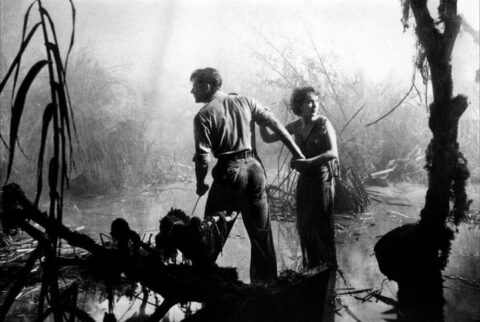
Zaroff initially seems the cordial host, but he has this rather freaky painting of a demon carrying off a woman [just like the door knocker] taking up most of one wall, and we of course immediately know what he means when he refers to “a new animal”, the hunting of having given back to him his old love of hunting. His talking becomes both more impassioned and more than a little dodgy, loving a Ugandi tribe saying of, “Hunt for the enemy, then hunt for the woman”. “Kill, then love. When you have known both, you’ve known ecstasy” he claims, and soon after gives Eve the most evil glare, basically saying to her, “When I’ve hunted down the men, I’m going to rape you”. Actually two sailors have already disappeared, and Eve’s drunkard brother Martin will be next, after being shown this trophy room of course, and despite the removal of those grim extra shots those two remaining severed heads still unsettle. I don’t recall them being in the version BBC2 used to show a few times; in fact come to think of it they were definitely missing because I’d read about said scene and was disappointed that the heads weren’t there. As for Bob, Zaroff initially wants the two to go hunt other humans together, having somehow picked up on the possibility that Bob may actually be up for this from Bob’s books, but of course Bob wants nothing to do with this. So, with a knife and a head start, he’s sent off with Eve into the jungle, Zaroff probably betting on Eve slowing Bob down. I’m not sure if Bob and Eve even fancy each other; the script doesn’t give them a scene where they express such feelings, paring everything down to the essentials.
The jungle flight, directed by Schoedsack with Pichel doing the stuff that came before, is pulsating stuff, even when one can recognise parts of the set. Oh look, that foggy marsh is also where that Brontosaurus trampled on a few sailors. And now it’s that log bridge which Kong turned round and round so that the men hanging onto it fell into that pit. There are even a few familiar shots of animated birds flying around in the background. Best of all, a waterfall that only appeared in a scene deleted from King Kong shows up here [well come on, it’s one of my favourite films of all time so I ought to know this stuff don’t you think?] as one of several matte shots in the film which can’t help but look a little ropey now but you can still appreciate the craftmanship, and one needs to remember that films like this look clearer than they would have done in their original cinema presentation. At one point Bob goes to a high place and sees that the island is no bigger than a deer park which makes its many features seem a bit silly, but by now things have almost become expressionistic, the sets slightly dreamlike with their fauna formations which don’t always have much sense to them. Likewise, as the action speeds up it becomes under cranked so people are running and fighting faster, yet by now it doesn’t really matter. There’s a really cool bit of POV during one part of a chase, while Bob fighting dogs looks so convincing that we can forgive the fact that in actuality one of them would probably rip him to bits in a few seconds. Obviously having the camera keep back while today’s films would have it up close also helps. The plentiful fighting in the final real is surprisingly brutal; there’s even a neck broken with an appropriate sound effect.
Among the cast it’s probably Wray who will be of most interest to many; here the scream queen only screams a couple of times and has dark hair, but her character is very pro-active, clearly clued in as to the nature of Zaroff and what’s going on much earlier than Bob, and keeping up with Bob with no complaining in the jungle. Leslie Banks’s Zaroff is continually interesting, especially when trying to maintain the demeanour of a kindly host even though his real self, a murderer, a sadist and a rapist [he’s clearly welcomed a fair few “guests” before and therefore surely some females], keeps trying to come out. He’s usually shot from the right but we sometimes see the slightly disfigured left side of the actor’s face to help evoke his character’s evil; an undeniably crude but effective device. Obviously we aren’t supposed to wonder how he maintains this enormous castle while also making sure that nobody knows that he’s there. It’s also strange seeing an African-American play a Cossack [“like all his countrymen, he’s a bit of a savage”], Zaroff’s head servant Ivan; was this the first example of that rare thing called whiteface in movies? Johnson, of course, is one of the King Kong alumni, but his role is much bigger here. Cabot is basically the comedy relief as Martin and acts blotto rather well; he’s really not in the film much though. Max Steiner’s score, written in two weeks after one by Richard Harley was rejected, isn’t as memorable as his Kong work, but then again this film required less music, the spotting being quite restrained until the hunt where the music gets increasingly agitated. He develops his main leitmotif into a mini rhapsody for piano for Zaroff to play not once but twice at the piano. The Most Dangerous Game is just terrific. Its final shot, which show us both the villain dying and the hero and heroine escaping. perfectly sums up this rather wonderful little jewel of a movie that really does manage to cram in a bit of almost everything you could wish for.










SPECIAL FEATURES
Limited Edition O-Card Slipcase [2000 copies]
1080p presentation on Blu-ray from a 2K restored scan
This is probably a tweaked, so therefore slightly improved, edition of the German 2019 release from Wicked-Vision, though of course with new special features. However, the Marian C. Cooper interview is ported over from the 2011 Flicker Alley North American release which contained a different commentary. Most of the picture is fine, with very deep blacks and a huge amount of clarity – I’d never noticed before that some of those heads are present in a later scene though not emphasised – but some sections are noticeably grainier, suggesting they come from a different source.
Optional English SDH
Brand new audio commentary with author Stephen Jones and author / critic Kim Newman
Jones and Newman both clearly love this film and are therefore happy about doing a commentary on it, though its short running time means that they just can’t cover as much as they probably want. I didn’t know that King Kong star Bruce Cabot wanted to play Zaroff but was turned down, that Cabot walked off the King Kong set when he thought that McCrea was playing his part, and that portions of Harley’s rejected score would then turn up in a lot of Universal horrors. I also didn’t cotton on as to how odd it is that the film criticises hunting yet one of its makers was a big-time hunter. Jones doesn’t like the Martin character much and wonders if Zaroff isn’t actually much of a hunter at all, while Newman points out Buster Crabbe -and now you know it’s him he’ll be recognisable as long as you know who he is – doing stunt work in the climax. All great stuff- but you wish that you could watch the film all over again so that they can chat even more about it.
Brand new interview: Kim Newman on “The Most Dangerous Game” [18 mins]
Newman, perfectly summing the film up as, “A little masterpiece of horror, suspense and action”, turns up again, and repeats a little bit of material from the commentary, but goes far more heavily into the Connell story, including the suggestion that Bob could be actually drowning and imagining his worst nightmare, as well as delving deeper into the remakes and imitations including variations such as the films where a white man is hunted by indigenous folk.
Brand new interview: Stephen Thrower on “The Most Dangerous Game” [19 mins]
Thrower also looks at the book, telling us that it emphasises the fear of the main character which the film felt it couldn’t do, that Margaret Perry was due to star but had a breakdown after reading a bad review of her previous performance, and that Steve Clementi [the Tartar] was famous as a knife thrower who never injured anyone – until he did. He repeats hardly anything said by Newman.
“Marion C. Cooper Reminisces ” extracts from a 1971 audio interview conducted by Kevin Brownlow [8 mins]
I assume that the rest of this interview hasn’t survived. We do hear that he and Schoedsack had no real script for their documentaries, Cooper criticising something which I can’t make out, and that Schoedsack, “Had no desire to go to Hollywood but wanted to try out a new idea” – well we know what that idea was, don’t we.
Suspense: 1943 radio adaptation [29 mins]
Orson Welles sounds a bit like he’s going through the motions as Zaroff, but a narrating Keenan Wynn is fine as Rainsford. Told mostly in flashback as Rainsford waits to kill Zaroff, the adaptation improves the story’s start and end, with Rainsford no longer just falling overboard and having a [rather short] sword fight with Zaroff. Its second half is pretty exciting, getting around the limitations of the radio play format. And there’s some music by Bernard Herrmann too!
Suspense: 1945 radio adaptation [29 mins]
This uses the same script, but now with J. Carroll Naish having fun channeling Bela Lugosi, and Joseph Cotten. Preceded by an advertisement for Roma wine from someone called Elsa Maxwell, “international authority on hospitality”, the audio quality isn’t quite as good as the former.
Escape: 1947 radio adaptation [30 mins]
Paul Frees and Hans Conrad may be lesser stars than the above, but they perform better in this version, which tweaks the script a bit. The flashback is just Rainsford looking back at his greatest adventure rather than waiting for Zaroff and telling us how he got there, the ship intro has the discussion about hunting before a more dramatic getting of Rainsford onto the island, and Zaroff hunts another off air before he gets to Rainsford.
German Theatrical Trailer
A collector’s booklet featuring a new essay by Craig Ian Mann, illustrated with archival imagery
Small but perfectly formed, “The Most Dangerous Game” is a stone cold classic that will entertain and excite viewers aged 8 to 80. It’s given suitable treatment on Eureka’s release. Highly Recommended!


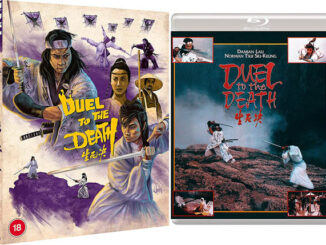
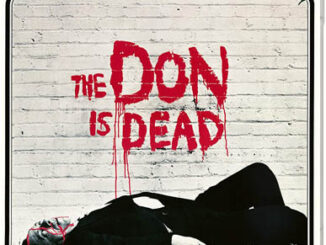
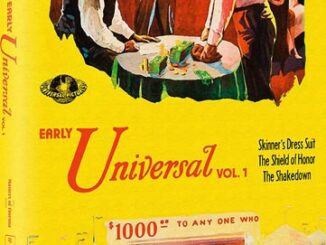
Be the first to comment